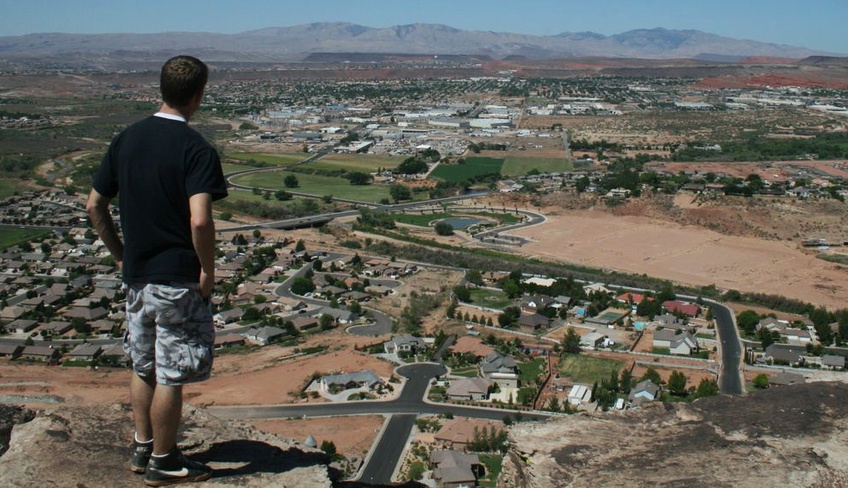If you're looking for a hike to get your blood flowing without draining your energy completely, Shinob Kibe is the hike you want.
Every step of Shinob Kibe's 3,228 foot trail will throw your mind in a whirl. There is so much to see and explore. As the trail winds up the mesa, you will find plenty of boulders that could be fun for kids or even college students to climb.
It doesn't take long to climb up. My brothers recorded their time up Shinob Kibe once as a competition, and they made it up in about eight minutes. So walking probably wouldn't take you more than an hour and a half to two hours, and that is with some exploring.
Most students know about the sites that look over older St. George, but this one shows a different part of our beautiful city.
From the top of Shinob Kibe, you can see the vast fields that surround the neighborhoods in Washington Fields. Not only does it have great views, but because of the lack of knowledge about the hike, there are not many people on the trail or on top of Shinob Kibe. So it is a quiet place for gathering your thoughts.
"(The view) is very panoramic," said Braden White, a freshman pre-engineering major from St. George. “You can get a great view in any direction.”
The trail will lead you to the top of a mesa where you can find a geocache deposit, a concrete navigation arrow, and a record book to keep track of who has visited Shinob Kibe.
Geocaching is a treasure hunt game using a GPS to find a container left at certain coordinates. When someone finds the container, the person takes whatever item is left behind and leaves one of their own items for someone else to find.
The concrete navigation arrow was built in the 1930s and was used to show a route from Los Angeles to Salt Lake City for air mail.
According to the Washington County Historical Society at wchsutah.org, The Paiute Indians named Shinob Kibe after a deity considered a protector of the tribes. Shinob refers to the “Great Spirit" and Kibe is "mountain."
Also according to the Washington County Historical Society, the Paiute Indians used the mesa for a defense and a refuge against numerous Indians, the Navajo Indians in particular, when other tribes would go on raids.
“The best thing about Shinob Kibe is that not many people know about it,” said Josh Gracia, a freshman biology major from St. George. “It’s a solid hike, and you can just relax when you get to the top.”
Gracia lives in the neighborhood near the trail and has climbed Shinob Kibe numerous times.
With a little exploring, you can find a couple of small caves within the rocks that have slid into a sturdy hold. The caves may not be anything too special, as they are only rocks gathered upon each other with an opening just wide enough for a person to slide down into, but they are still a cool part of nature.
If you're really lucky, you may even find an eagle or its nest. White said he once saw an eagle while on top of Shinob Kibe. If you look over the east edge of the cliffs on the eastern side, you can see what looks like remains of a nest big enough for eagles.
White said he has heard of a cave that actually goes into the ground on the mesa somewhere, though he has never found it.
Upon reaching the top, you will find two flagpoles. One used to be an American flag, but it was taken down because there is no light source at night. The other has a flag close by under a rock, which was made by a local Scout group.
White said he and his brothers have hiked all over the mesa, and he said on the eastern side there are some interesting finds.
With the heat we get in St. George, don't forget to bring water with you — just a water bottle should be enough. You don't need to bring boots; simple tennis shoes will get you up the trail just fine.
Shinob Kibe is the mesa located in Washington Fields near Staheli Hill, the new Sullivan Virgin River Soccer Park and the bridge on 300 East.Take your first left after the bridge southbound. Then take the next left and follow that road until Pocahontas Drive on your left. Take another left and follow Paiute Drive until the end of the road. Cross over the fence, and the trail will be on your right. The trail is marked by a small stack of rocks.
For more information find the Shinob Kibe Facebook page at https://www.facebook.com/ShinobKibe.

